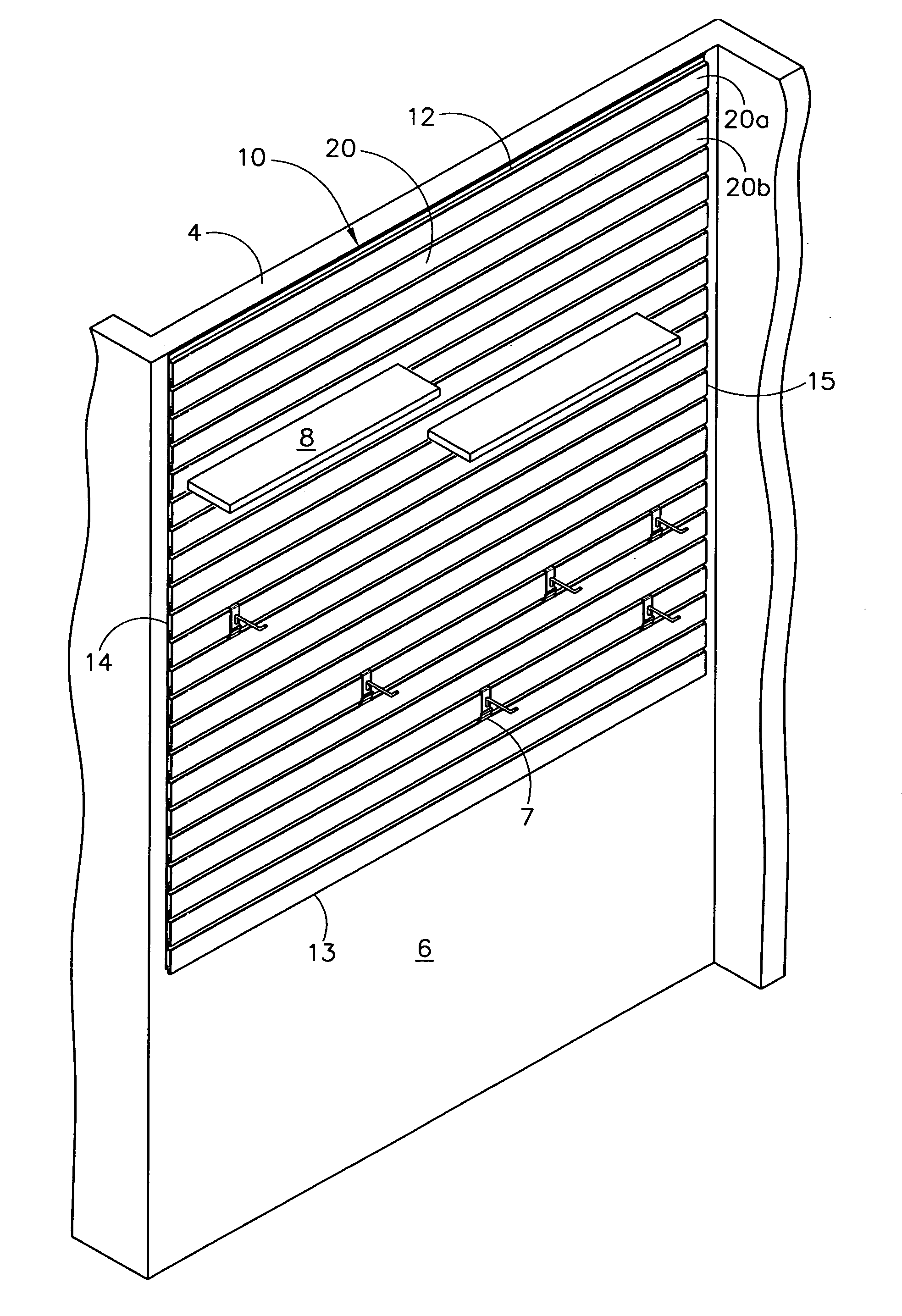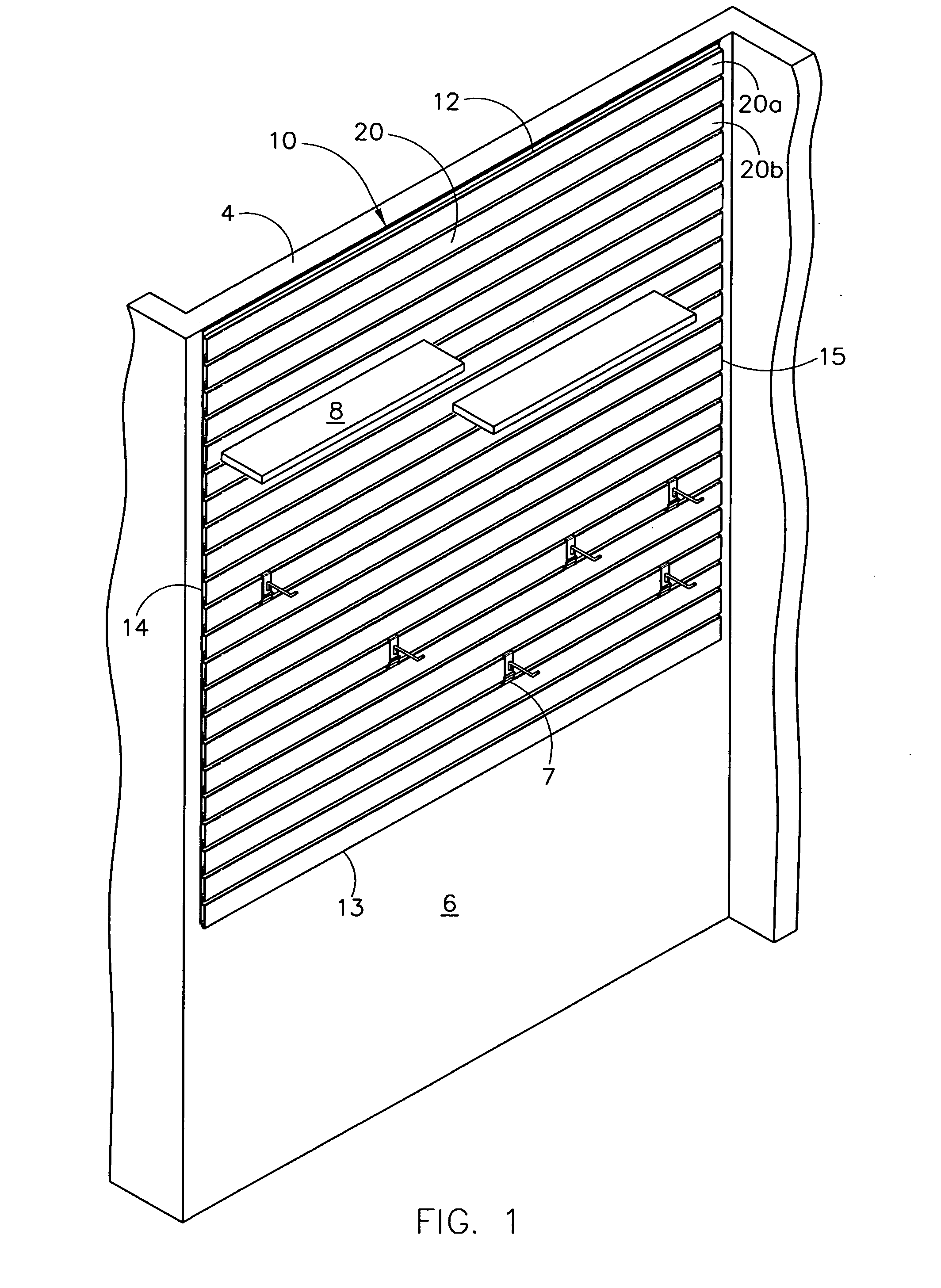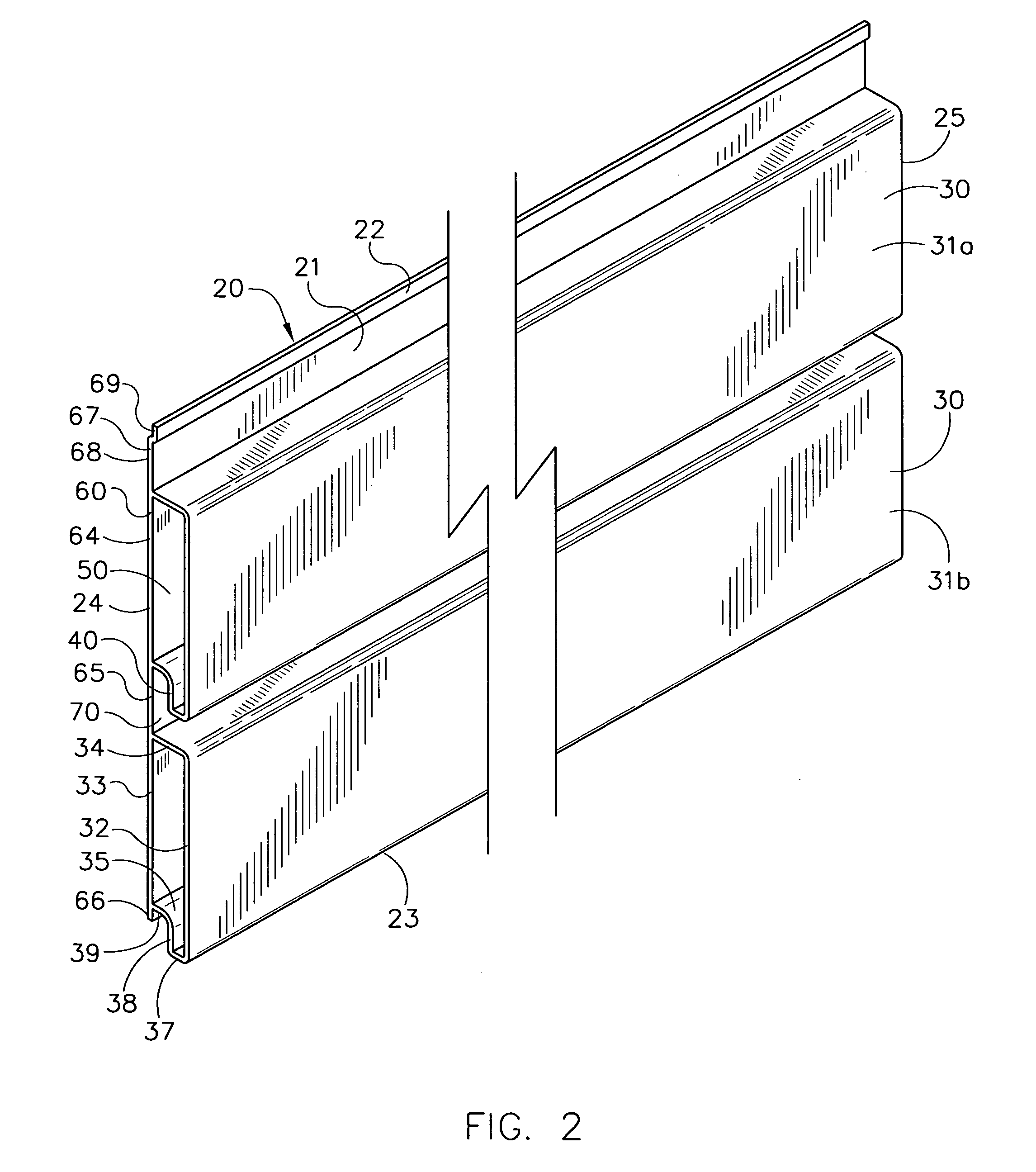Slatwall extrusion and assembly
a technology of extrusion and assembly, which is applied in the direction of dismountable cabinets, show hangers, cabinets, etc., can solve the problems of compromising the physical characteristics and cost of plastic materials, affecting the appearance, and being a bit heavy
- Summary
- Abstract
- Description
- Claims
- Application Information
AI Technical Summary
Benefits of technology
Problems solved by technology
Method used
Image
Examples
Embodiment Construction
[0019]While this invention is susceptible of embodiment in many different forms, the drawings show and the specification describes in detail preferred embodiments of the invention. It should be understood that the drawings and specification are to be considered an exemplification of the principles of the invention. They are not intended to limit the broad aspects of the invention to the embodiments illustrated.
[0020]Residential and commercial buildings generally have walls 4 with spaced, vertically aligned, wooden or metal studs 5 that form a vertical plain to which an attractive outer layer is fastened such as a layer of drywall 6 with a flat outer surface. The present invention relates to a slatwall assembly 10 generally shown in FIG. 1, and the individual slatwall sections 20 that form the assembly as generally shown in FIG. 2. The planar assembly 10 has an attractive uniform appearance from top 12 to bottom 13 and side 14 to side 15. The assembly 10 is formed by a number of elon...
PUM
 Login to View More
Login to View More Abstract
Description
Claims
Application Information
 Login to View More
Login to View More - R&D
- Intellectual Property
- Life Sciences
- Materials
- Tech Scout
- Unparalleled Data Quality
- Higher Quality Content
- 60% Fewer Hallucinations
Browse by: Latest US Patents, China's latest patents, Technical Efficacy Thesaurus, Application Domain, Technology Topic, Popular Technical Reports.
© 2025 PatSnap. All rights reserved.Legal|Privacy policy|Modern Slavery Act Transparency Statement|Sitemap|About US| Contact US: help@patsnap.com



